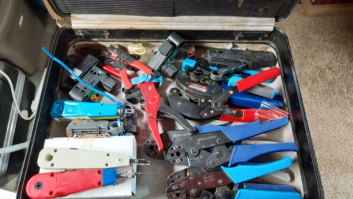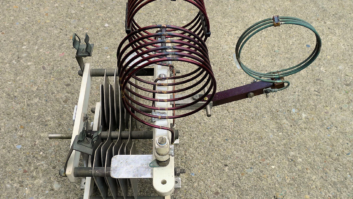The author is vice president of business development for Orban Labs.
We all know that engineers have way too much on their plates and may not always have the time to check things thoroughly, especially with equipment that may, at first glance, appear to be operating correctly.
After spending a fair amount of time at multiple AM transmitter facilities recently, I have some observations on things that really should be checked more often.
MODULATION MONITORS
Out of the dozen or so AM sites I have been to since March of 2019, I haven’t found a single modulation monitor that was accurate.
For the sites I visited in this report, I carried a Belar AMMA-2 that I had calibrated by Belar just prior to the start of my visits (thanks Belar!) and I am certain it’s accurate. That being said, there are a few issues with mod monitors that I have found:
— Non-MDCL/AMC capable modulation monitors should not be used on transmitter
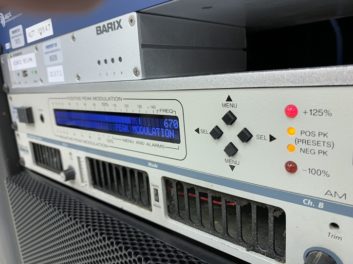
s running MDCL/AMC. Typically, I found these types of mod monitors were reading upwards of 40% higher than the actual modulation when compared to my AMMA-2. In some instances, the AMMA-2 showed 75% positive modulation on a transmitter running MDCL where the onsite modulation monitor was showing 115% positive.
— Modulation monitors out of calibration or broken. If your modulation monitor is going on 10+ years old and hasn’t been back for a calibration, odds are it’s not going to be accurate. I highly recommend sending it in periodically to make sure it’s operating correctly and in calibration.
— Incorrect setup, or making measurements off air. Most AM modulation monitors need to have the RF input set correctly. There is usually a “Cal” or “RF” level adjust for this. If this isn’t correct, your readings are going to be meaningless. While you are at it, you might want to check to make sure that the sample port output of the transmitter from which you are feeding the mod monitor is good. A scope will go a long way to check that the sample port is operating correctly. And, please, “just say no” to making AM modulation measurements off air … it’s not going to be remotely accurate.
TRANSMITTER PROBLEMS
I “broke” a couple of 1990s-era 50 kW AM transmitters during my tour. Both of those weren’t happy to begin with, and my attempts to get them to make full power at 125% positive modulation were met with a number of PA faults.
Once the PA problems were sorted out at these sites, I found that both of these were happier at 120% positive mod than 125% positive modulation. It might be that your aging transmitter simply won’t handle the higher positive modulation levels anymore.
Additionally, I found a couple of transmitters that had the audio polarity reversed … and that will also lead to a lot of unhappiness with trying to get positive modulation over 100%. I found a backup transmitter with its audio polarity reversed too. The main transmitter had the correct polarity.
If the transmitter with which I was working on my tour had a digital audio input available, I always used it. I typically found that peak control was within 0.5% using digital inputs.
And that brings me to LF tilt on analog transmitter inputs: a scope and a square wave generator will tell you quickly if you have an LF tilt issue on the transmitter. Put a 50 Hz square wave into the transmitter and take a look at the output of the transmitter on a scope. Adjust the transmitter LF EQ in the processor to minimize the tilt. I usually found I needed +3 dB at 3 Hz to flatten the square wave on older transmitters.
You also might run into modulation overshoots (bounce). Bounce is typically a nonlinear problem caused by a sagging or resonant transmitter power supply found in older transmitters. Newer transmitters fed via a digital audio input typically do not have this issue.
If you are running MDCL, your transmitter may have issues of which you are unaware. It’s a good idea to periodically disable your MDCL and check your power output. It’s possible that your MDCL operation could be masking issues that may be coming into play.
AUDIO ISSUES
The biggest problem I found with audio was that the audio processor’s input levels were set incorrectly and as a result the processor’s AGC wasn’t operating optimally. This causes the AGC gating to misbehave, resulting in “pumping” and “breathing.” Check your specific audio processor manual for proper AGC setup.
In almost all cases, you want the AGC to be operating in its “mid-range” with nominal program levels. On current Orban processors, that is about 10 dB of AGC.
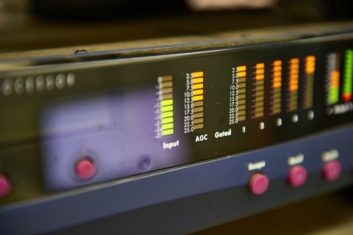
Also check the gate level settings. At one station I ran into a processor that was showing that the gate was on all the time and I thought the processor was broken. Tech Support found that the gate level had been set 6 dB higher than where it should have been set. It had been misadjusted in an attempt to compensate for improper input level. The fix was to adjust the input sensitivity to drive the AGC to mid-range (which was an 8 dB increase) and reset the AGC gate to its nominal -30 dB setting. Recalling a factory preset would have also reset the gate to its normal level. It was a revelation to hear how much better the station sounded once the AGC and gate had been set up correctly.
Make sure you’re using the correct processing settings. Over time, the formats of many stations have changed, car radios have changed and the AM band’s noise floor has increased. What worked for processing when the station was running “Urban” 20 years ago won’t work for today’s talk format — you’re going to need a different processing preset on the processor.
I was recently working with an AM that just didn’t sound all that great, and we decided to start fresh with a factory stock preset. We used the “Music Medium” on their processor and added 2 dB of “brilliance” and the station sounded spectacular.
As part of our testing and adjustments, we listened to radios in both my rental car and the CE’s car, while the PD was driving around town in his vehicle. Sometimes a fresh start goes a long ways to making things sound better.
AM transmitters often sound subtly different from each other because many have levels of nonlinear distortion (THD and IM) that are large enough to be audible. So in terms of processing adjustments, one size does not fit all, and you may have to back off processing (mainly clipping) if the transmitter has higher levels of distortion than a modern transmitter.
The Nautel NX3, for example, specifies 0.8% THD and 0.5% SMPTE IM at 99% negative modulation. For its Flexiva 3D, GatesAir specifies typical THD of 0.3% and 0.4% SMPTE IM at 95% modulation.
Additionally, older receivers with diode envelope detectors produce significantly increased distortion when negative modulation exceeds 90%. This is not true of modern DSP-based receivers, however.
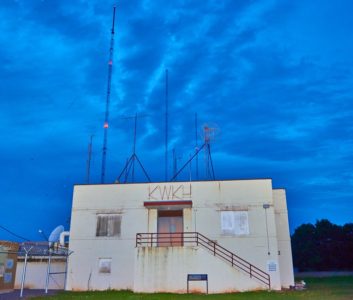
Take a critical listen to your station. Do the announcers sound “crunchy” with elongated, raspy sibilance? If so, it’s probably beating your Time Spent Listening (TSL) numbers to death. If you turn down the clipping, it will help considerably. Also, consider buying a newer processor. An early 1990s AM processor set to “Chernobyl” to try and get over today’s high noise floor environment isn’t going to cut it. And with all due respect, old analog processors just can’t be competitive any longer in most markets.
And then there is the PPM enhancer which many have set way too high — I call that setting “max rock crusher.” At that level, those tend to sound like a steel bowl being scraped with a whisk. A bit of a deft touch is in order to not sound like a Mixmaster with a bad bearing.
If you’re an engineer having problems sorting out your processing or arguing with the PD over proper processing settings, I’d be happy to personally chat with you or your PD. Email me at [email protected].
My opinion is that with proper modulation and processing, AM stations can sound great and can run more efficiently (which will save your station some money!). It wouldn’t hurt to run a quick reality check the next time you’re at the transmitter or adjusting the processing.
Comment on this or any story. Email [email protected].









